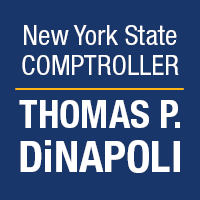Crain’s New York Business today published an op-ed by New York State Comptroller Thomas P. DiNapoli on the need for greater transparency and accountability in budgeting for the use of federal relief funds. The full article is below:
What are New Yorkers getting from federal Covid relief funds?
The new state budget reflects robust tax revenue growth and an unprecedented injection of federal funds.
Federal assistance has stabilized state finances, allowing New York to weather the impacts of the Covid-19 pandemic and preserve key services while providing the opportunity to emerge stronger than before . A recent report from my office found that all states received more money than they sent to Washington, D.C., in taxes in federal fiscal year 2020. This was true even for New York. , which was among the biggest net losers in tax dollars.
But the extraordinary federal assistance is temporary and should be targeted at programs that ease the pains of the pandemic and improve the lives of all New Yorkers. Developing a clear plan and ensuring funds are used efficiently, effectively and equitably should be top priorities. Unfortunately, the new budget fails to provide the transparency and accountability essential to these efforts.
The state continues to rely on large block appropriations for certain federal funds, which gives the Budget Control Division control over the timing and target of billions of dollars. Detailed appropriations would allow for greater visibility into the intended use of funds, more accurate reporting, and assurance that the state has a well-thought-out plan for the money.
Federal guidelines for fiscal stimulus funds from the U.S. bailout — totaling $12.7 billion for New York City — require reporting on plans to address inequality, including how projects will benefit affected communities from disproportionately by the pandemic, as well as details on expenditure, performance and arrangements to ensure results are achieved.
Wanted: Details
The original New York plan affirmed broad principles, but it did not contain specific dollar amounts or detailed information on how the goals would be achieved. Other states are doing a better job, enacting stand-alone apportionment bills, promoting public engagement and releasing comprehensive plans for federal aid.
State-by-State Comparison of National Conference of State Legislatures ARP Fiscal Stimulus Fund Allocations Shows Expenditure Descriptions for Eligible Categories, Including Broadband Access, Economic Aid and Development , education, housing, water infrastructure and workforce development. The New York allocation shows only one category: state operations and administration.
No other major state has disclosed less about its use of the funds. New York has not demonstrated how it will deploy funds to improve equity, measure the success of its efforts, or ensure funding reaches the individuals, families and businesses most affected by the pandemic. We must do better.
I’ve published reports on major relief initiatives, including the Federal Paycheck Protection Program for Small Businesses and the Emergency Rental Assistance Program. I also developed a Covid-19 relief fund tracker to provide monthly updates on major initiatives. However, my office’s ability to shed light on the use of funds is limited. The money came out slowly for some programs and hard to follow for others. Information on results is minimal and performance evaluation is difficult.
Perhaps the silver lining of the pandemic is that we have an opportunity to lay the foundations for a better economic future and fairer outcomes. We must intensify our efforts to achieve this. I am committed to doing my part to keep the public and stakeholders informed of our progress.
Track state and local government spending on Open Book New York. As part of State Comptroller DiNapoli’s open data initiative, search millions of state and local government financial records, track state contracts, and find frequently requested data.

